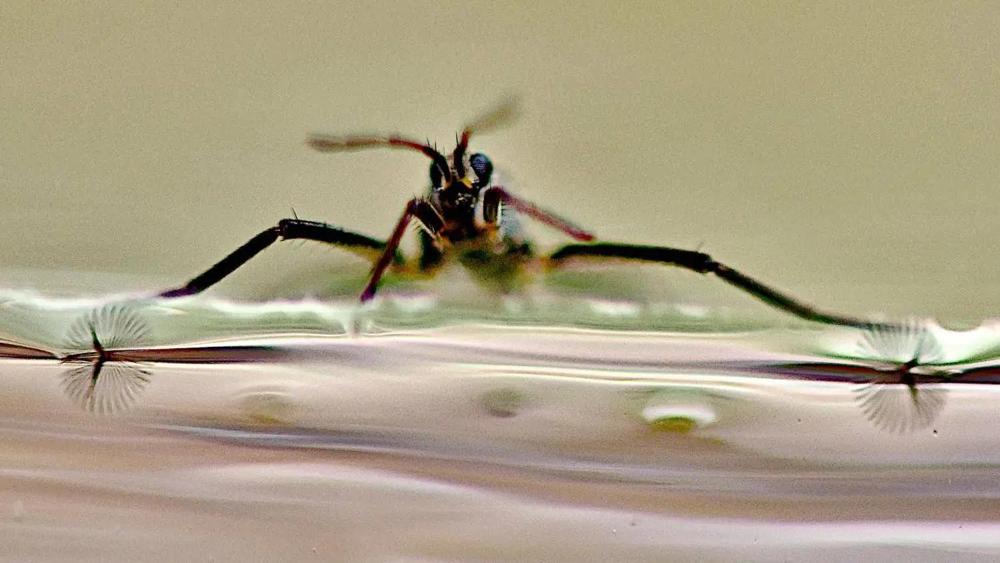Victor Ortega-Jimenez
A Rhagovelia water strider with its fans open in the water.
A new study explains how tiny water bugs use fan-like propellers to zip across streams at speeds up to 120 body lengths per second. The researchers then created a similar fan structure and used it to propel and maneuver an insect-sized robot.
|
ADVERTISEMENT |
“Scientists thought the bugs used their muscles to control the fans, so we were surprised to learn that surface tension actually powers them,” says Saad Bhamla, one of the study’s authors, and an associate professor in Georgia Tech’s School of Chemical and Biomolecular Engineering.
Instead of relying on their muscles, the insects about the size of a grain of rice use the water’s surface tension and elastic forces to morph the ribbon-shaped fans on the end of their legs to slice the water surface and change directions.
Once they understood the mechanism, the team built a self-deployable, one-milligram fan and installed it in an insect-sized robot capable of accelerating, braking, and maneuvering right and left.
…

Add new comment